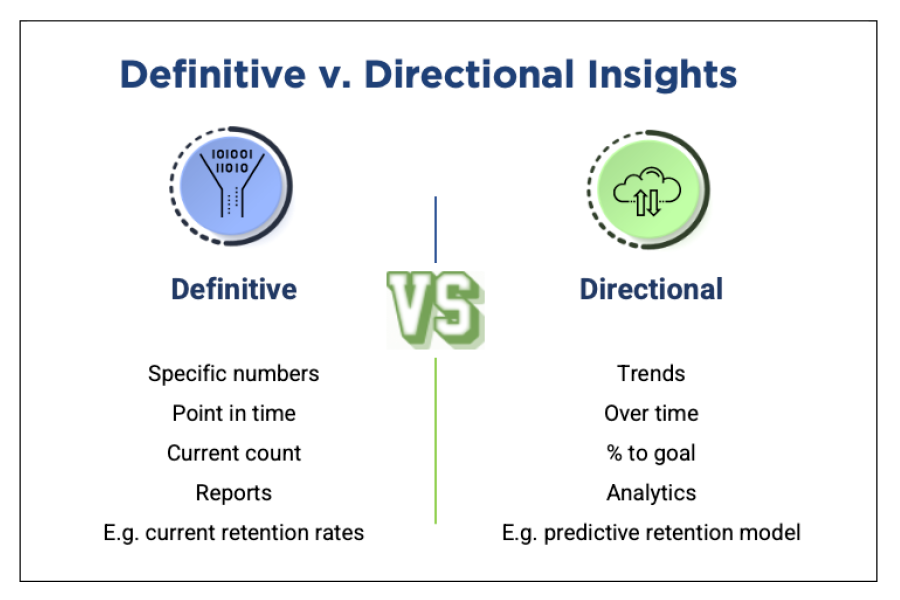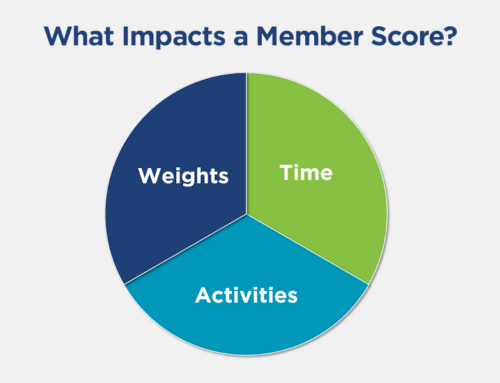We likely don’t need to convince you that in today’s digital age, data is the lifeblood of any successful association. And you’re likely to agree that ensuring the cleanliness and accuracy of that data is key.
But what happens if your data isn’t clean? What happens if you’re heading into 2024 with big goals and ambitions and a database filled with duplicates? Don’t let the state of your data keep you from doing the things that you want to do in the new year. Here are 6 tips on how to transform your data into a tool you can use to meet and exceed your association’s goals, into next year and beyond!
1. Data should be directional
Your data may be disorganized. It may be inaccurate. It may not match between systems. It may be plagued with duplicates. You may have parent-child relationships that don’t work. You may also feel that until you clean that up, you just can’t do anything.
Yes, it would be nice to have sparkling clean data. In reality, though, in almost every case it’s best to proceed based on dirty data rather than waiting for perfect data or even making a decision with no data. Paired with your experience and judgment, your decisions can be data informed or data guided using less specific data measurements.
Consider your average spending year over year or the trend in your retention over a period of time. Are you doing better at engaging your members over time? These types of insights are going to provide your association with a directional sense of where things are going and whether or not you’re headed in the right direction – and they don’t need to be perfect or exact to get started.
2. Data should be a planned project
Cleaning up data can feel like a daunting job. A lot of folks in the association world will tell you they’re spending too much time on data clean up. However, we’d argue it’s not that you spent too much time, it’s that you didn’t plan to spend any time. When you don’t plan the time, any time you spend on data clean up is seen as a distraction from all of the things that you did plan. It’s time to change that thought process!
Think about data governance and data cleanup as an investment. Data is one of your most valuable assets and the time spent working on it should be allocated or specifically set aside for data quality. Block it off on your calendar and record it on a project plan that someone holds you accountable to.
Plan for spring cleaning in 2024! Watch this on-demand webinar for tips on how to give your data the love and attention it deserves throughout the year, as well as quick wins to make it extra sparkly at least once a year.
3. Data should be everybody’s job
When you’re making it a point to plan your data clean up, make sure to pull everyone in on the project. Yes, everyone.
Your entire team should be focused on cleaning up data wherever they interact with it. For instance, the events department can consider clean up opportunities when members register for your conference. The renewal team can take advantage of member renewal periods to have members update their profiles.
It’s likely that your team is interacting with members all the time and missing opportunities to collect and update your data because it’s not technically their job. When data becomes everybody’s job, many hands make light work. Because you likely have more data than one person can realistically manage, it can also make sense to designate a data owner for every data set with that person in charge of measuring progress on your clean up project.
4. Data should have an expiration date
Feeling overwhelmed about data volume? You may either be collecting data that you don’t need and or retaining data longer than you need to. The sweet spot for most associations is right at three years. Any longer and the data is not really relevant anymore.
While there can be a psychological fear associated with getting rid of old data (what if I need it later?!) it’s important to remember that data truly does have an expiration date. While old data may no longer be relevant, it can also be an actual security risk for your association. You may even be paying for insurance to house old legacy data that you’ve never done anything with. We’d suggest considering whether it’s worth the expense.
Hang on before you start dumping data left and right, though. Just like you need to plan a project for data, you should also be intentional with your plans for data retention. Be specific about what data you keep and why. For instance, you may want to track your membership trends over time, in which case, it makes sense to save data on how many members you had ten years ago. The e-mail addresses, phone numbers and credit card numbers of those members? You’re unlikely to need to contact those folks, so that information is not as necessary to save.
These decisions should be outlined as part of your overall strategy for data governance.
Download The Ultimate Guide to Data Governance for Associations to learn how to build a data governance strategy for your association.
5. Data collection should be intentional
We’ve just discussed getting rid of some of your data and now we’d like you to think about data that you’d like to have but don’t. What data does your association struggle to collect? If you’re looking to level up your data collection, there are a few ways to make sure you’re getting data that you can actually use.
- Be consistent – If every department asks their own questions in their own way with their own check boxes, your data likely won’t be usable. If year to year, your event registration form has completely different demographic questions, it’s going to be really hard to compare how one year performed better than another one for different member types.
- Be deliberate – Don’t just ask the questions you think about as you’re building the form, but consider, why are you asking these questions? What’s the strategic goal? What will you do with this information?
- Be creative – Make it fun to collect data as you’re interacting with people. Throw a poll up in your next meeting. Give members an incentive to provide their updated information.
- Make it easy – Don’t ask members to fill out a seven page survey at the end of the meeting. Just ask simple questions that you actually need. Again, think about what the purpose of the data you’re collecting is to determine if you need to collect it.
6. Data should be a continuous focus
Cleaning up dirty data starts to feel overwhelming when it’s something you feel needs to be changed overnight. Instead, approach your data cleanup as a process of continuous improvement. Don’t fall into the trap of being reactive, instead focus on the long-term picture. What is the data that you really need to clean up and keep? Is your data actually helping you achieve your strategic goals or are you just spending time cleaning it up, and not using it?
Look at what you need to prioritize as an organization. Put your focus on cleaning up the data that has actual revenue potential for your association.
If you’re considering whether to focus on cleaning up physical addresses in your database, first ask yourself, “Are we sending people physical postcards and having them respond to calls to action?” If the answer is “yes,” you can feel good about cleaning up that data. But if the answer is “no,” your time will be better spent elsewhere.
You can also start with low-hanging fruit to make a quick impact. For instance, If you’re looking at a record, cleaning up every field will seem like a daunting task that you’ll never finish. Instead, consider which two fields are more important to your association and start there. Making changes to data that has an immediate impact on your strategy and operations not only makes a difference, it can also help to build momentum for your overall cleanup project.
Pro Tip: Data doesn’t have to be perfect
Whether you’re continuing data clean up efforts into 2024 or starting a whole new initiative, remember to focus on small, impactful changes that become part of the routine at your association. Every piece of data doesn’t need to be clean to be able to find insights that can help you make better decisions. Take the data that you have and start using that instead of worrying about dirty data you can’t use.
Remember, the end goal of cleaning up data is to help your association connect more meaningfully with your members. And by getting your whole team on board, thinking strategically about what data you need and what’s not worth investing in, you’ll be able to put your data to work more quickly and more accurately.
Dive deeper into this topic by watching the on-demand webinar. Learn more about how we help associations with data governance by scheduling a call with one of our data-loving experts.






